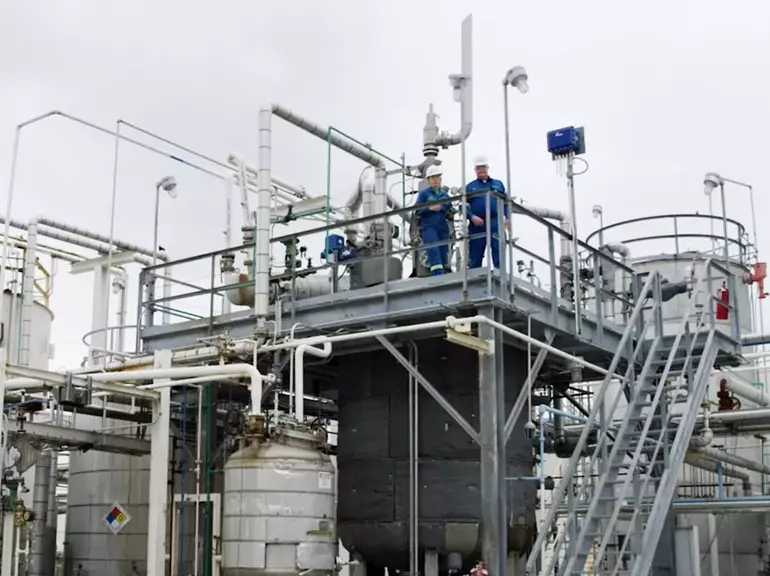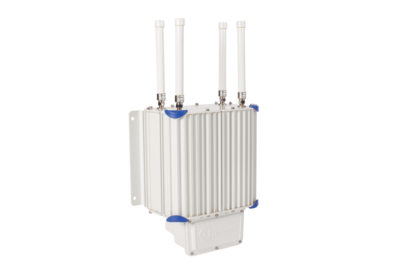In the Industrial Internet of Things (IIoT), the Gateways serve as the “data collectors” of the wireless sensors which transmit the data to the IoT platform in addition to the classic access points in the radio-based company network.
5G (the fifth generation of the mobile communications standard) currently offers speeds up to ten times faster than 4G (LTE) with very low latency and high reliability. According to the dialogue initiative “Germany talks about 5G”, up to one million devices per square kilometre can be connected wirelessly.
IT security
In the digital transformation, security concepts against cyber attacks are one of the most important tasks of IT experts. This task has already been solved in most companies, because access points or gateways have long been available in almost every company. Nevertheless, many companies still shy away from using them in the Ex areas.
This raises the question of how the hardware, which is “released” by the IT, can also be used in Ex areas and utilised with the large number of access points and gateways that are available on the market?

The use of standard devices in Ex areas
The BARTEC portfolio for wireless networks in potentially explosive areas includes a broad range of different product variants in order to enable maximum flexibility in the choice of material quality, dimensions and connection methods for a wide variety of requirements worldwide. Our enclosure solutions are design on for use of high-quality standard access points, repeaters and gateways from industry-leading suppliers. Our solutions make it possible to use the same equipment in potentially explosive areas which you utilise in your safe zones.
Solutions for Zone 2 / 22
BARTEC and its subsidiary Extronics, which specialises in the development and manufacture of connectivity and IIoT infrastructure as well as systems for device and personnel tracking, have developed various enclosure concepts that cover almost all applications for the challenge of digital transformation. The ignition protection category “nR” (vapour tightness) is used in this process. The ignition protection category “nR” permits the use of non-explosion-proof communication devices, such as access points or gateways in potentially explosive areas of Zone 2 due to IP protection tests in accordance with IEC/EN 60079-0 and IEC/EN 60079-15, as well as the use of dust explosion protection in Zone 22 due to IP protection tests pursuant to IEC/EN 60079-31. In case that solutions for the North American standard are required, Class I, II Division 2 solutions can also be realised.
Product solutions for Zone 2 / 22
Universal Access Point enclosures offer a quick solution for the utilisation of permanent wireless networks in potentially hazardous locations. The enclosure is suitable for non-explosion-proof communication devices, such as access points or other radio-transmitting modules, e.g. GSM modules. The high-frequency transparent plastic enclosures are particularly suitable for communication devices with integrated antennas. The choice of different housing sizes enables that simple transponders, gateways and access points can be realised.
The iWAP XN3 series enclosures offer a reliable way to utilise wireless technologies from all manufacturers in ATEX and IECEx zones 2 and 22 as well as in North American hazardous areas of Class I, II Division 2 and Zone 2. Marine-grade aluminium enclosures with external antennas serve as basis. The intrinsically safe antenna couplers (approved according to “ic” for Zone 2 and 22) enable to use non-explosion-proof antennas. Thanks to the IP protection of IP 66 and NEMA 4, “rugged” applications can also be realised without any problems. The selection of different enclosure sizes and antenna couplers make it possible that almost any requirement can be met even in harsh environmental conditions.
Solutions for Zone 1 / 21
The solutions for Zone 1 and 21 are based on the same “technical concept”, however, the requirements in Zone 1 and 21 are much higher in terms of safety concepts. Different enclosure concepts that are tested and approved in accordance with the type of protection “Ex d” also serve as basis in this case. The function of the type of protection “Ex d” is based on the containment of any potential explosion which may occur inside the enclosure. This is achieved by an explosion-proof design of the enclosure together with flame transmission resistant joints at all enclosure openings. Here too, solutions can be realised in accordance with the North American standard Class I, II, Division 1, Groups B-G or Class I, II, Zone 1/21 Groups IIB+H2, III.
The iWAP 107 enclosure series provide a reliable way of utilising wireless technologies from all manufacturers in ATEX and IECEx zones 1 and 21 as well as in North American hazardous areas of US & Canada Class I Division 1 / Zones 1 and 21. They are based on aluminium enclosures with external antennas. The intrinsically safe antenna couplers (approved according to “ic” for Zone 1 and 21) also enable to use non-explosion-proof antennas in zones 1 and 21. Thanks to the IP protection of IP 66, “rugged” applications can also be realised without any problems.
The highlight of the EXgate® enclosure series is a high-frequency transparent dome. This makes it possible to realise solutions with non-explosion-protected communication devices, such as access points or other radio-transmitting modules, e.g. GSM modules with integrated antennas. The high-frequency transparent dome also enables solutions in accordance with the “5G” standard. Various enclosure sizes are also available in this case.
Author:
Reiner Englert, Product Manager BARTEC





